What is Content Management?
The systematic approach to creating, organizing, governing, and storing digital assets is called content management.
It gives you control of the material you publish to keep your site organized, up to ****, and relevant.
Our State of Content Marketing: 2023 Global Report found that content quality and publication frequency are top priorities for businesses of all sizes.
As an example, the marketing team at a company might produce:
- Social media creatives and copy tailored to different platforms
- Blog posts and other materials (e.g., case studies, presentations, etc.)
- Graphics for blog posts, social posts, and emails
- Call-to-action banners
- Webinar recordings
- White papers
That’s a lot of content to juggle and keep updated.
A solid content management plan is key for keeping everything efficiently organized. It also helps you track improvement opportunities.
Consider this: In 2020, you wrote a blog post with a list of top food brands.
Since then, a new player has entered the market, but your content doesn’t cover it.
Likewise, one of the brands you covered has fallen in popularity and now gets negative reviews.
You’d swap the brands out to capitalize on the “trending” brand’s search volume and make sure your content is still relevant when you optimize it.
Let’s look at more reasons why you must take a purposeful approach to managing your content.
Why Do You Need to Manage Your Content?
If you don’t periodically review your published content, some of that information will eventually be old and irrelevant. This means it will no longer be helpful or valuable to your audience.
So, a big part of content management is updating, refreshing, and deleting old content.
And when you bake content audits and optimization into your processes, you save time on content creation, ensure content contains the latest information, and stay competitive.
Here’s how to do that.
The Content Management Process
Also called the “content management life cycle,” the content management process handles digital content throughout its journey from creation to its eventual archiving or deletion.
It comprises six main steps:
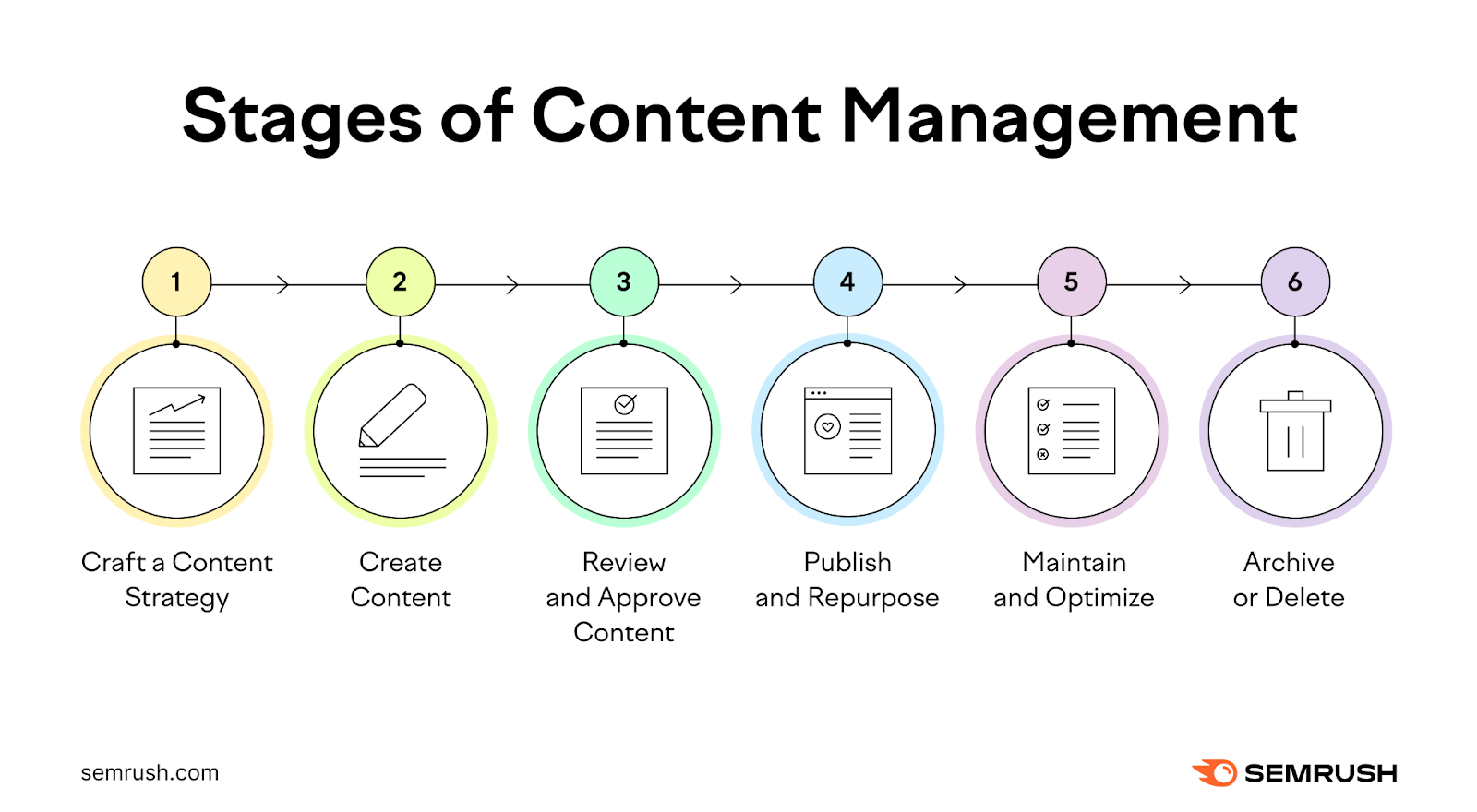
1. Craft a Content Strategy
The foundation of all content marketing efforts, a content strategy is your high-level plan for creating and distributing content. It’s usually a segment of your wider digital marketing strategy to get in front of a new or larger audience and achieve business goals.
By creating this first, you can ensure every piece of content serves a purpose, resonates with your intended audience, and aligns with your broader business objectives.
To create a content strategy:
- Define the content’s objectives (e.g., to bring attention to your product’s new feature)
- Identify the target audience (i.e., the segment most likely to use this new feature)
- Ensure the content fits into your overall business or marketing strategy (e.g., driving feature adoption will hopefully lead to higher customer lifetime value)
Further reading: The Ultimate Guide toContent Marketing Strategy
Use a Content Calendar
A content calendar outlines when and where you plan to publish content.
It will help your team stay ahead of factors that affect content, like seasonal relevance, audience availability, and promotional campaigns.
Content calendars also help you collaborate with team members and save time. You can see what needs to happen when, without knocking on doors or firing off emails.
Your calendar can include plans for social media content, blog posts, marketing emails, and any other deliverable that falls under your content strategy.
You can do this in a spreadsheet until you feel like you need functionality beyond a fairly basic list. Then you can graduate to one of the many content calendar tools available, and find the one that works best for you.
Conduct Keyword Research
Finding the best search query phrases to target with your content is the overall goal of keyword research.
Keywords help tell search engines what your content is about so they’re more likely to rank your content higher in search engine results pages (SERPs).
There are plenty of free tools to help you with keyword research, such as Google Keyword Planner and Google Trends.
For deeper keyword insights, including competitor gaps and related terms, try Semrush.
You can search for keywords, discover variations, and see how your keywords rank against competitors.
In Keyword Overview, type in the keyword(s) you want to research, select the location you’re targeting, then click “Search.”
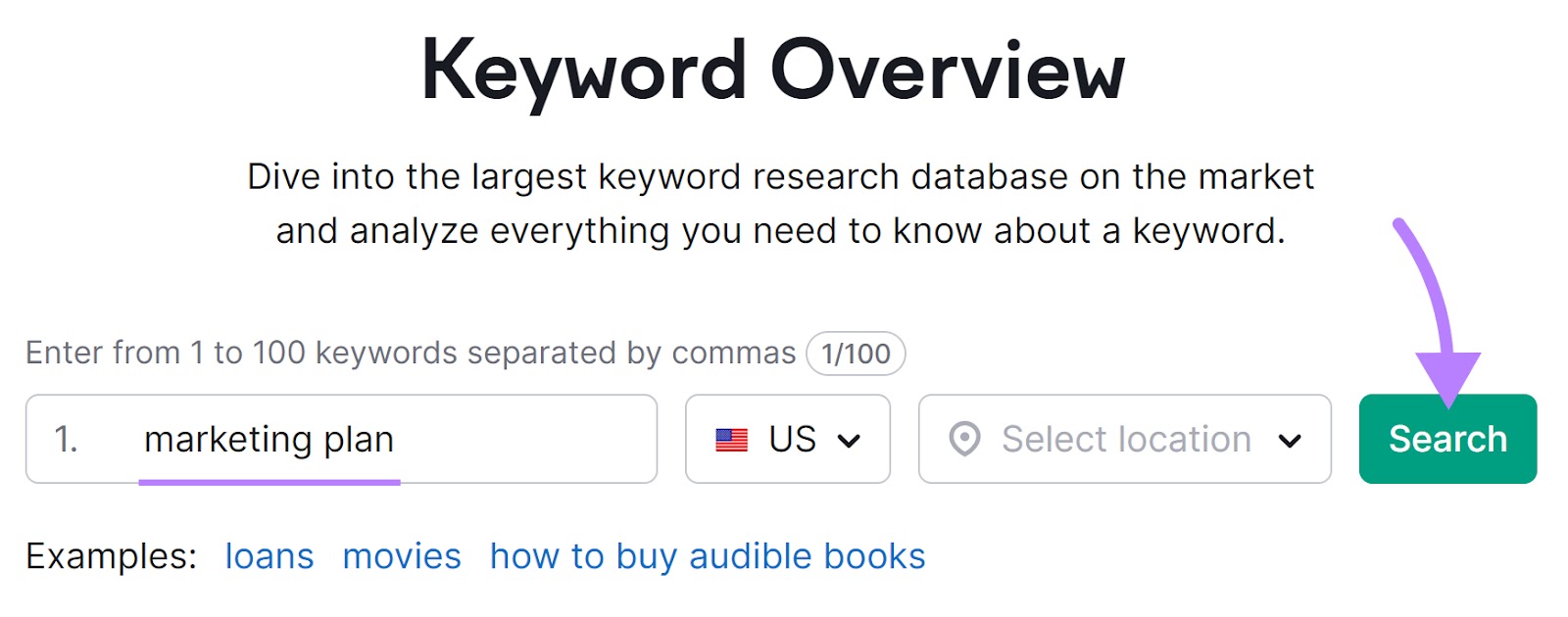
It will return information on the keyword volume, difficulty, intent, and more.
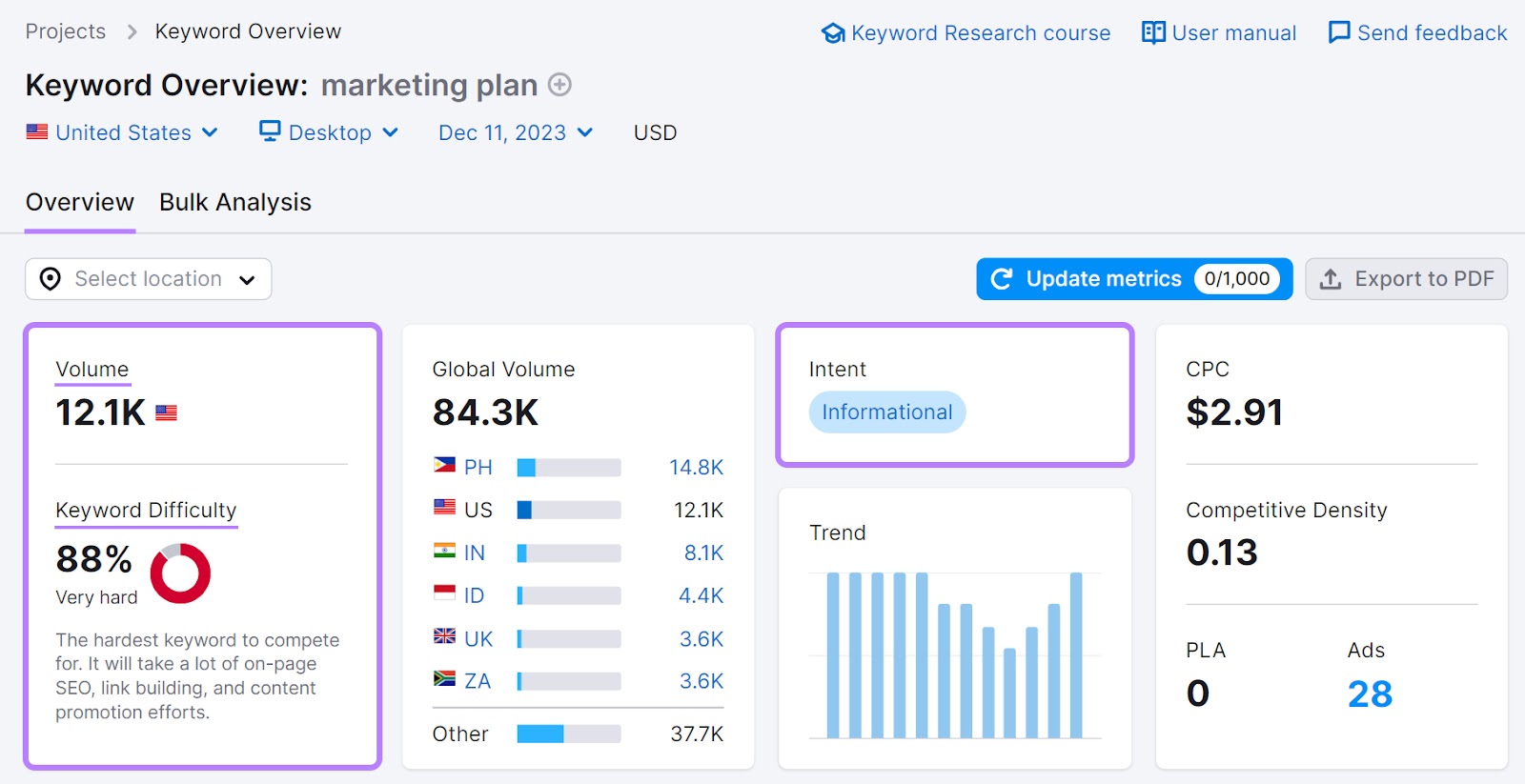
Semrush’s Keyword Magic Tool can also suggest related keywords.
Simply type in your keyword, and click “Search.” The tool will generate a list of keywords that expand on the word or phrase you entered.
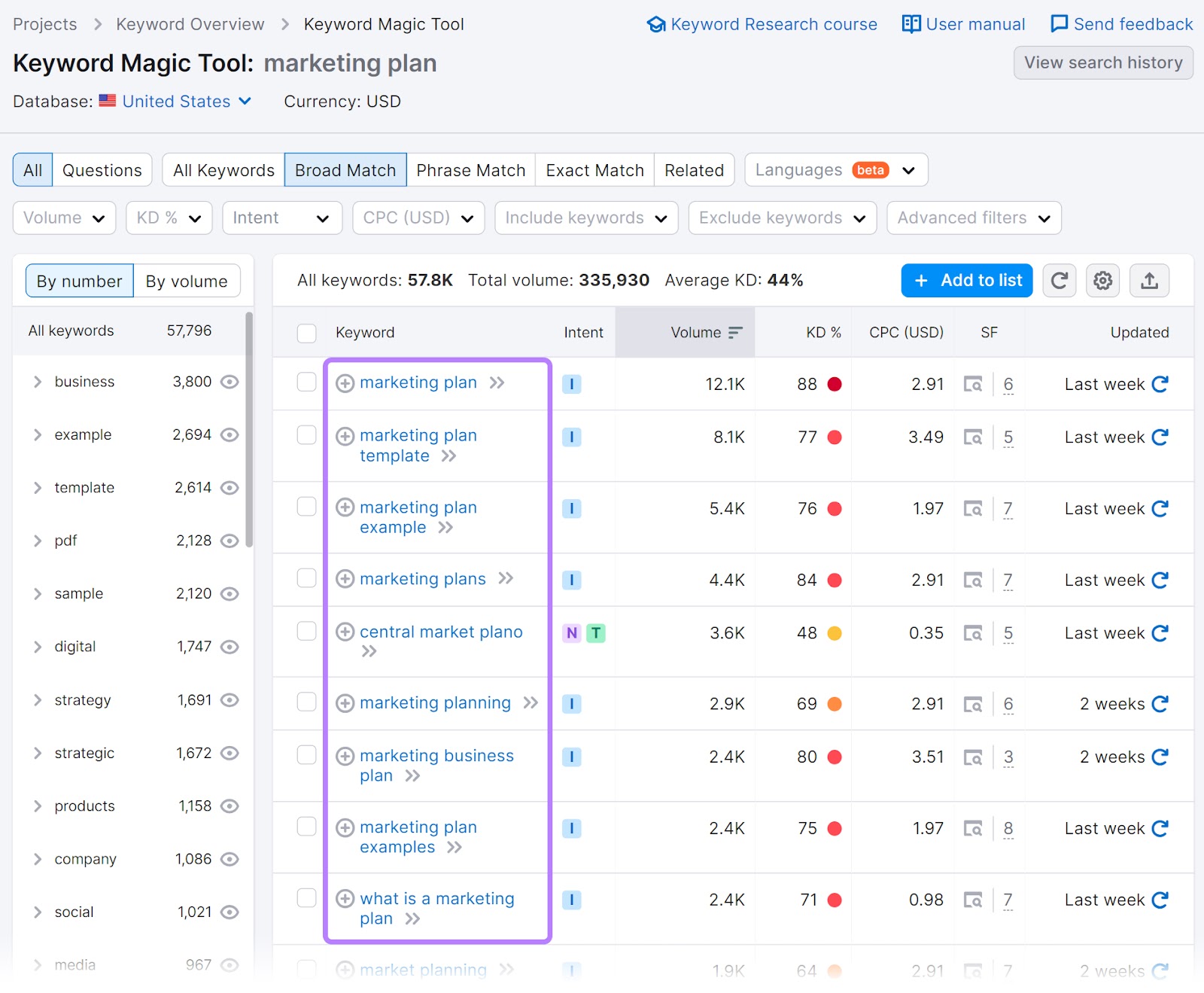
Further reading: Learn more about keyword research in our guide, How to Do Keyword Research for SEO (A Detailed 3-Step Guide).
2. Create Content
In this step, you create the articles, videos, social posts, etc., that resonate with your audience and suit your brand.
Content creation involves several steps, from generating topic ideas to promoting a published piece.
Depending on the breadth of your marketing strategy, for each topic it could mean:
- Writing new posts for the blog
- Designing graphics
- Shooting videos for social media
- Recording podcasts
To help with ideation, you can use Semrush’s Content Idea Generator. It will generate several topics, which can be displayed in a few ways, including mind maps. It will also show you competitors’ headlines so you can craft unique, attention-getting titles. Try it for free.
The content you create should be optimized for your chosen keyword, meaning it appears in the text in a way that’s relevant and natural for your reader, which can also help it rank higher in the SERPs.
Semrush’s SEO Writing Assistant can also help with some of these steps. It can make your text more search engine-friendly, improve your content’s readability, and check for plagiarism.
To use it, go to “Content Marketing” in the sidebar, “SEO Writing Assistant,” and click “Analyze my text.”
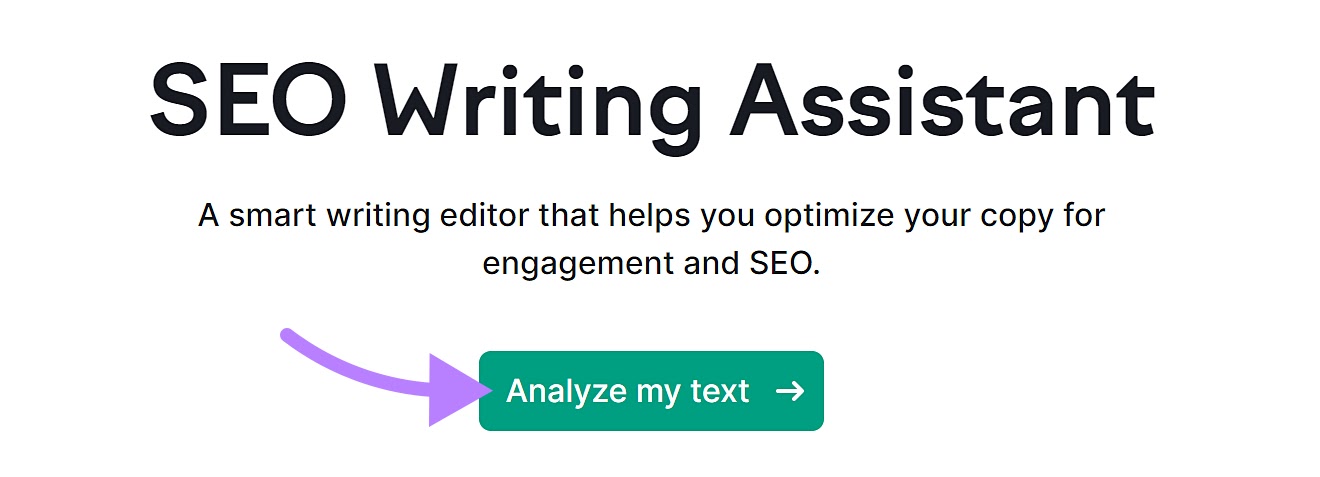
You can type directly into the tool, paste your text in, or import it directly from the web. Then, enter your target keyword(s), or have the tool automatically extract them. The writing assistant will then rate your content on readability, SEO, tone of voice, and originality, and provide recommendations for improvement.
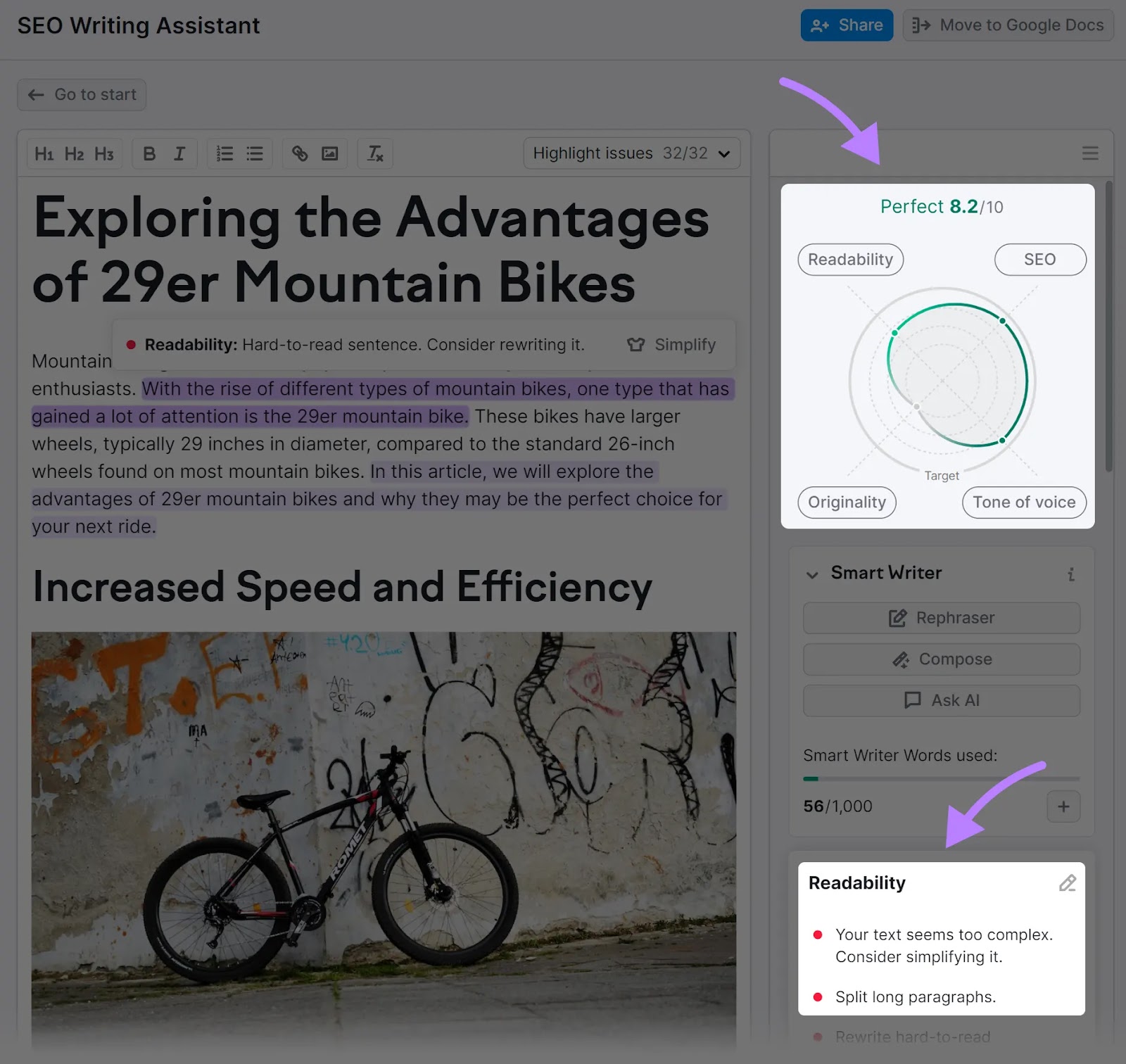
The Smart Writer feature can also help by rephrasing sentences, composing sentences, or answering questions.
Before any content creation happens, assign clear roles and responsibilities, and make sure anyone who needs it can access your brand policies, such as a style guide. They also need access to your brand assets, like logos, colors, and typography.
This saves you editing time because it increases the likelihood that content will fall in line with brand standards at the review stage.
Prior to this, you need solid processes around governing your content so that everyone stays on the same page.
Create Content Governance
A collection of policies, standards, and processes guiding how your organization handles content is known as content governance.
This keeps content consistent and of high quality, no matter who creates it (in-house, freelancers, or an agency), or where you publish it (your blog or social media).
Further reading: Content Creation: What It Is & How to Do It in 2023 [Tips + Tools]
Use a Content Management System
A content management system (CMS) centrally stores content so your team can easily find and access it.
CMSs like WordPress, Joomla, and Drupal allow you to create and publish your content, add team members, store media, search for specific content, and more.
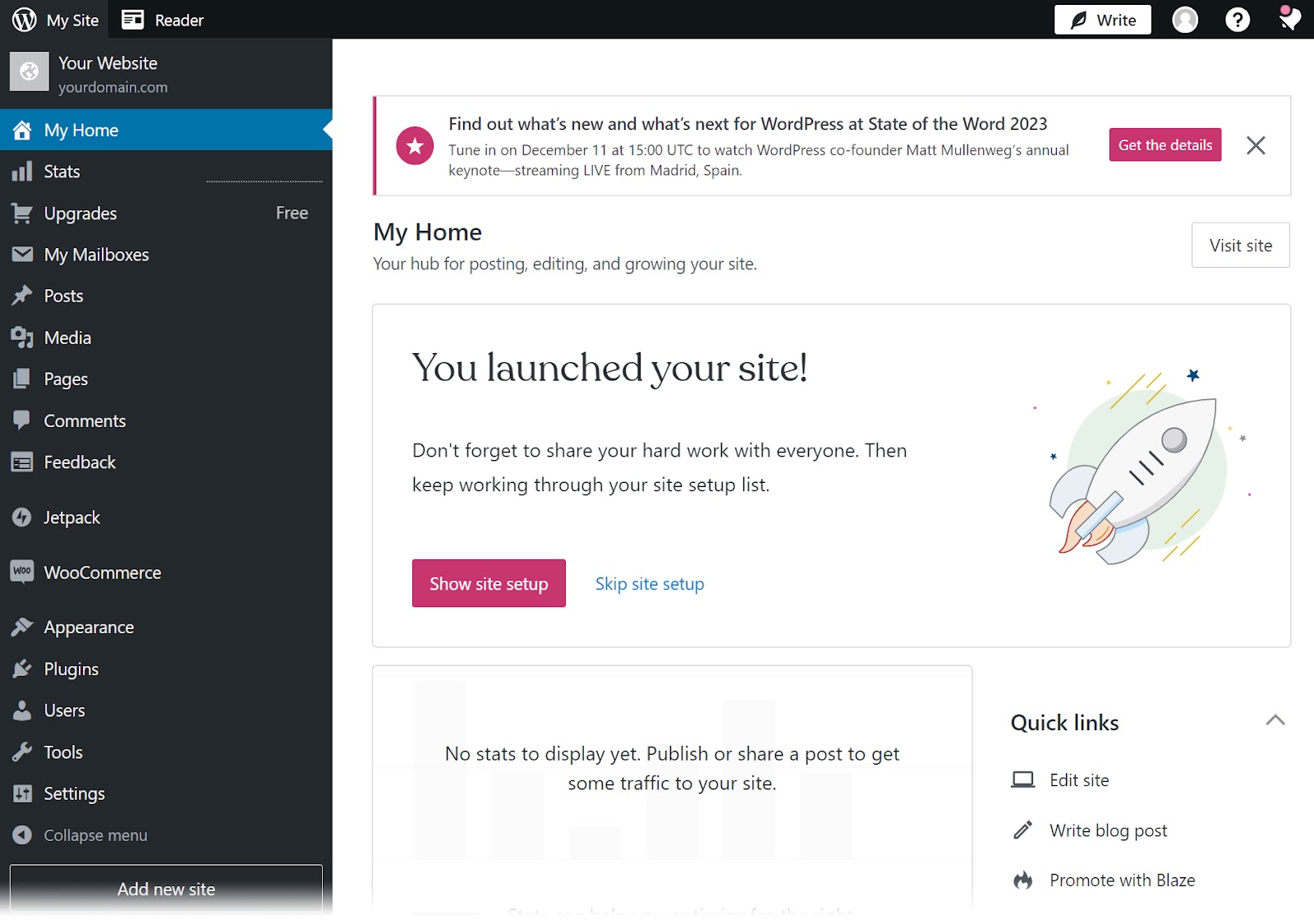
A CMS can also track and analyze your content’s performance in terms of views, clicks, and shares.
Further reading: What Is a Content Management System (CMS)? [2023 Guide]
Categorize Your Content
How you label your content affects how easily colleagues and customers can find it. Think of categories as the table of contents for your blog. For example, on the Semrush blog, we organize all our content into these main categories:

Users can access articles and guides tailored to their interests and areas they want to learn more about.
So, in this step, create naming conventions to label your content in the back end of your CMS.
Organizing your content like this saves users the frustration of scrolling through hundreds of pages to find what they need. In WordPress, for example, you can create categories simply by clicking “Add New Category.”
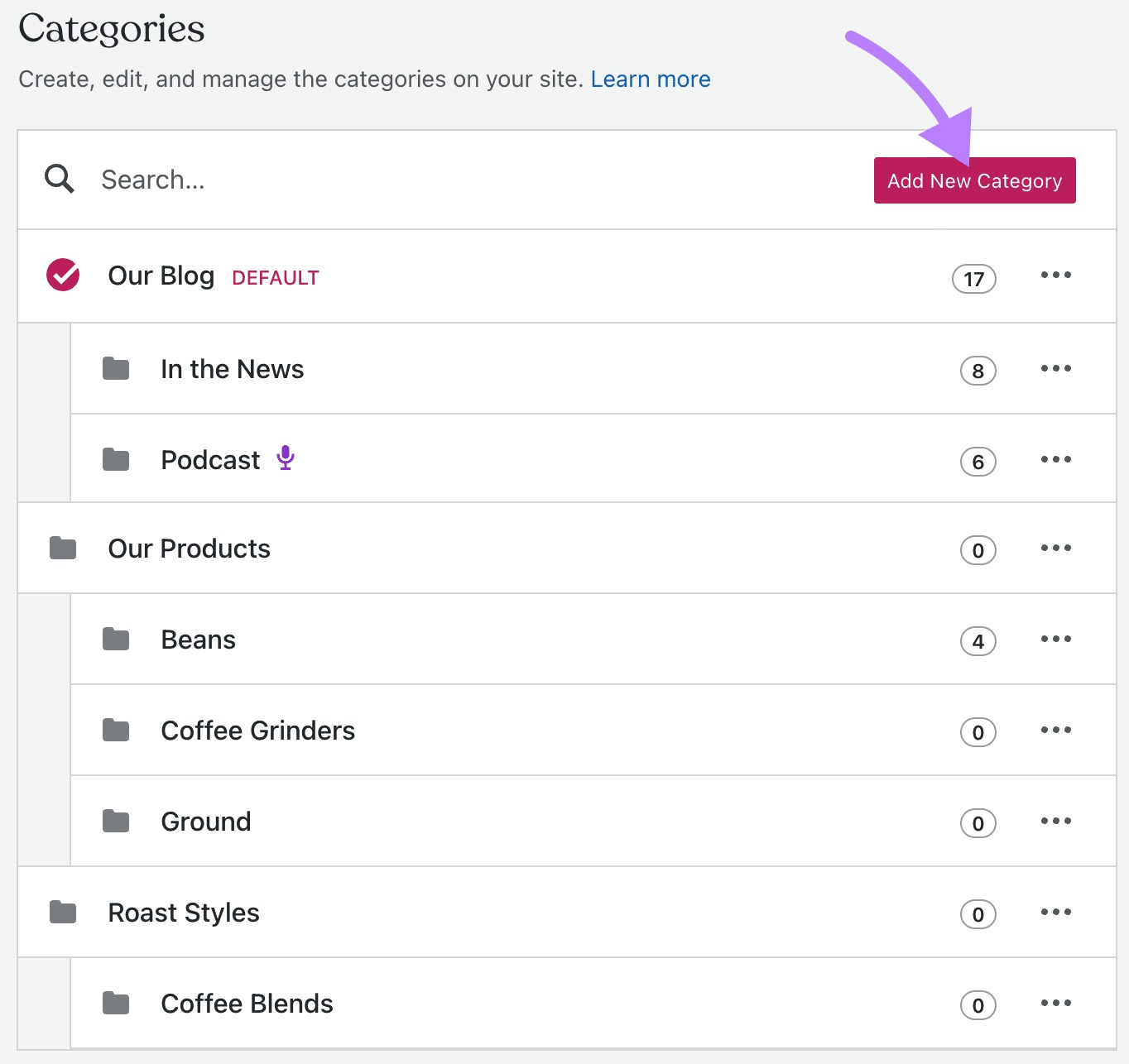
Image Source: WordPress.com
Then, any time you write a blog post in WordPress, you can assign it to a category. So, users can easily navigate to the content they want.
3. Review and Approve Content
A solid content review and approval process ensures everything you publish aligns with your brand’s voice and message. And checks it for any errors before publication.
Having the right processes in place makes reviewing and approving content smoother for everyone involved.
For example, creating a blog post may look something like this:
- A writer researches and writes content
- A developmental editor analyzes it to check the flow and structure
- A copy editor checks the spelling, grammar, and quality of referenced sources
- A graphic designer creates relevant images
Plugins and tools like Grammarly or ProWritingAid can give you tips on how to refine your content, such as by reducing wordiness.
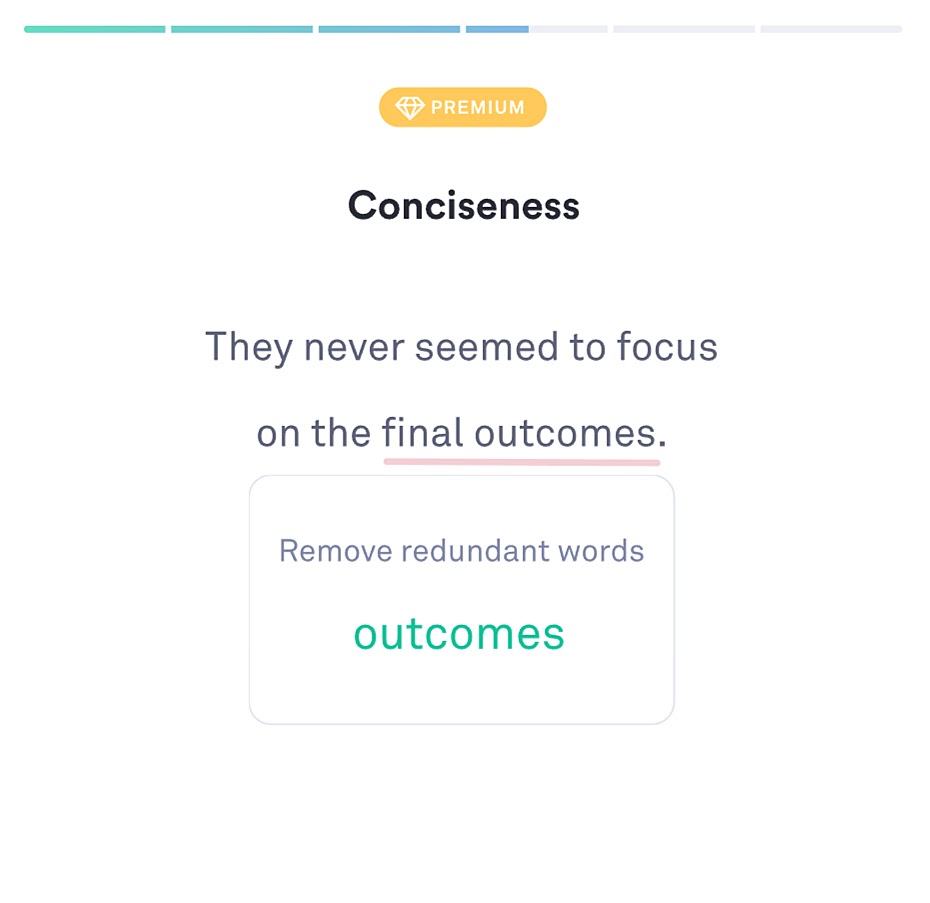
4. Publish and Repurpose
Creating content is half the battle. Next, you need to make sure it reaches your audience.
Publish and Distribute Your Content
Once you’ve reviewed your content and made any necessary corrections, it’s ready to publish. Then you need to make sure people find it. This is content distribution.
Promoting your content on different channels—or snippets of it on the same channel—increases the likelihood that your audience will see it. Which is the point of creating the content in the first place.
For example, say you’ve written a blog post. You can then share that post on social media and in your email newsletter.
To save time on publishing and distribution, you can use tools. Scheduling content to publish automatically also means you won’t forget to post at the designated time.
It also trains your audience to know when to expect new content from you, which makes them more likely to visit your site and/or social media profiles at the time(s) you publish.
You can publish your content to social media directly or through third-party tools, like Semrush’s Social Poster.
With Social Poster, you can draft, schedule, and publish content to LinkedIn, Instagram, Facebook business pages, Pinterest, and X (formerly Twitter) without leaving Semrush. You can also track metrics such as clicks and engagement.
To schedule a post, click “Social Media” in the left sidebar, click “Social Poster,” then choose when you want to publish your content.
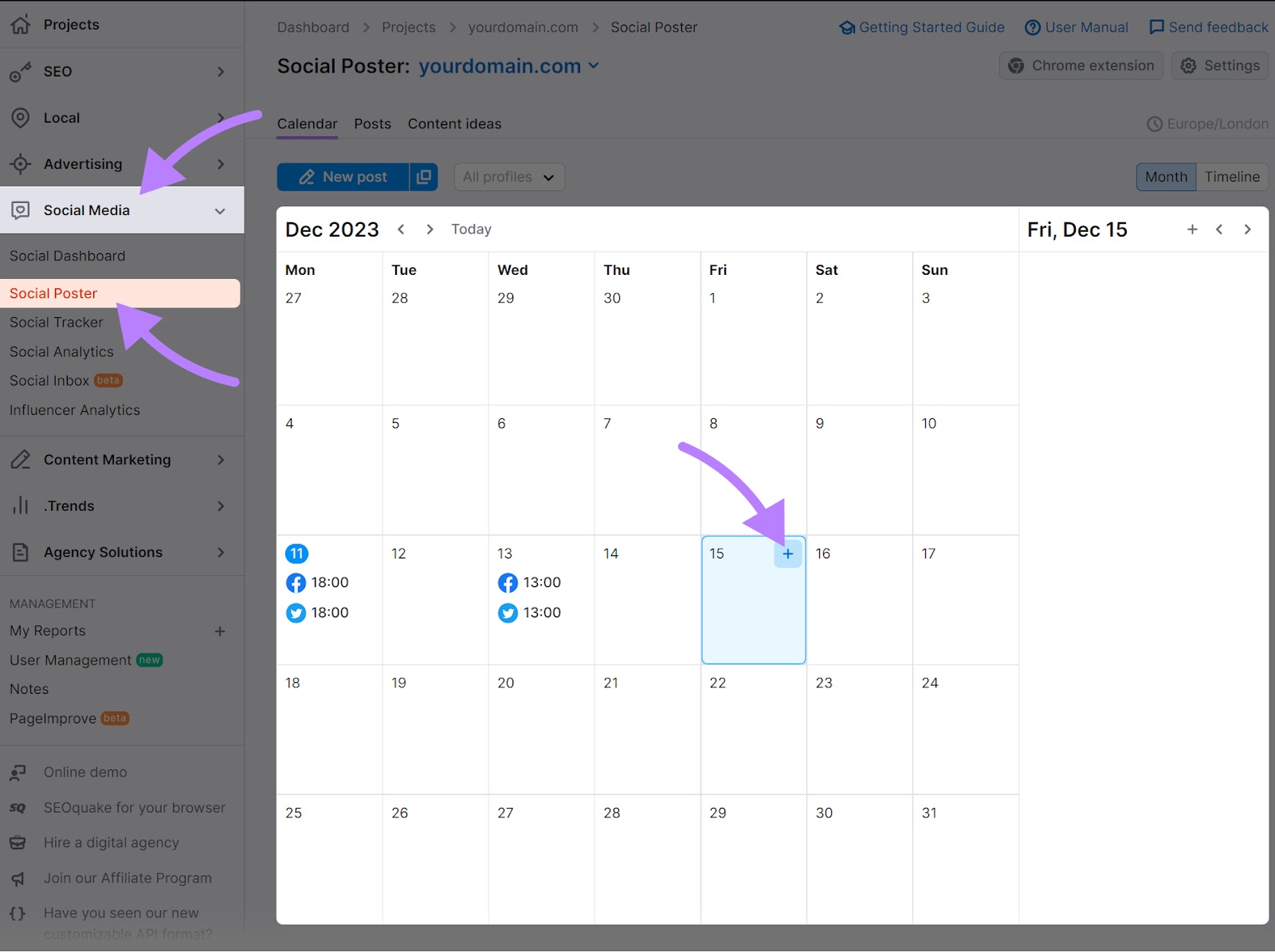
It will then take you to the preview page. Here, you can add the content and select what time you want it to go live.
Repurpose Content Across Channels
Different platforms cater to varied demographics. Multichannel distribution—whether on websites, a social media platform, or an email newsletter—ensures your content reaches its audience wherever they are.
For example, you might publish an article on your blog, share key insights as graphics on Instagram, then email a summary and link to your newsletter.
We did this for our course, How to Optimize Mobile: The CRAFT of Mobile SEO. It teaches the CRAFT method for optimizing your website for mobile devices.
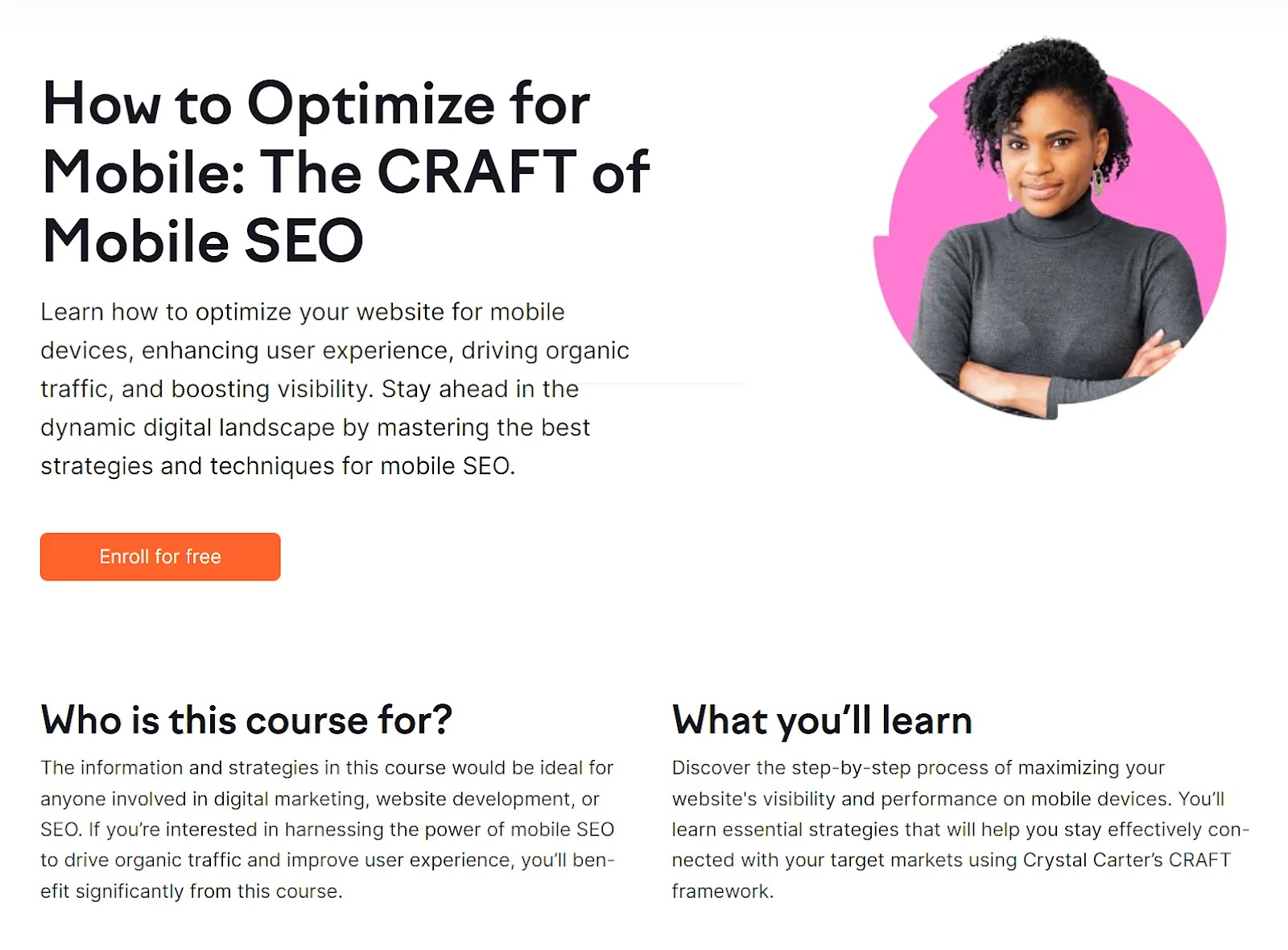
We then repurposed the CRAFT method explanation into a short Instagram carousel.
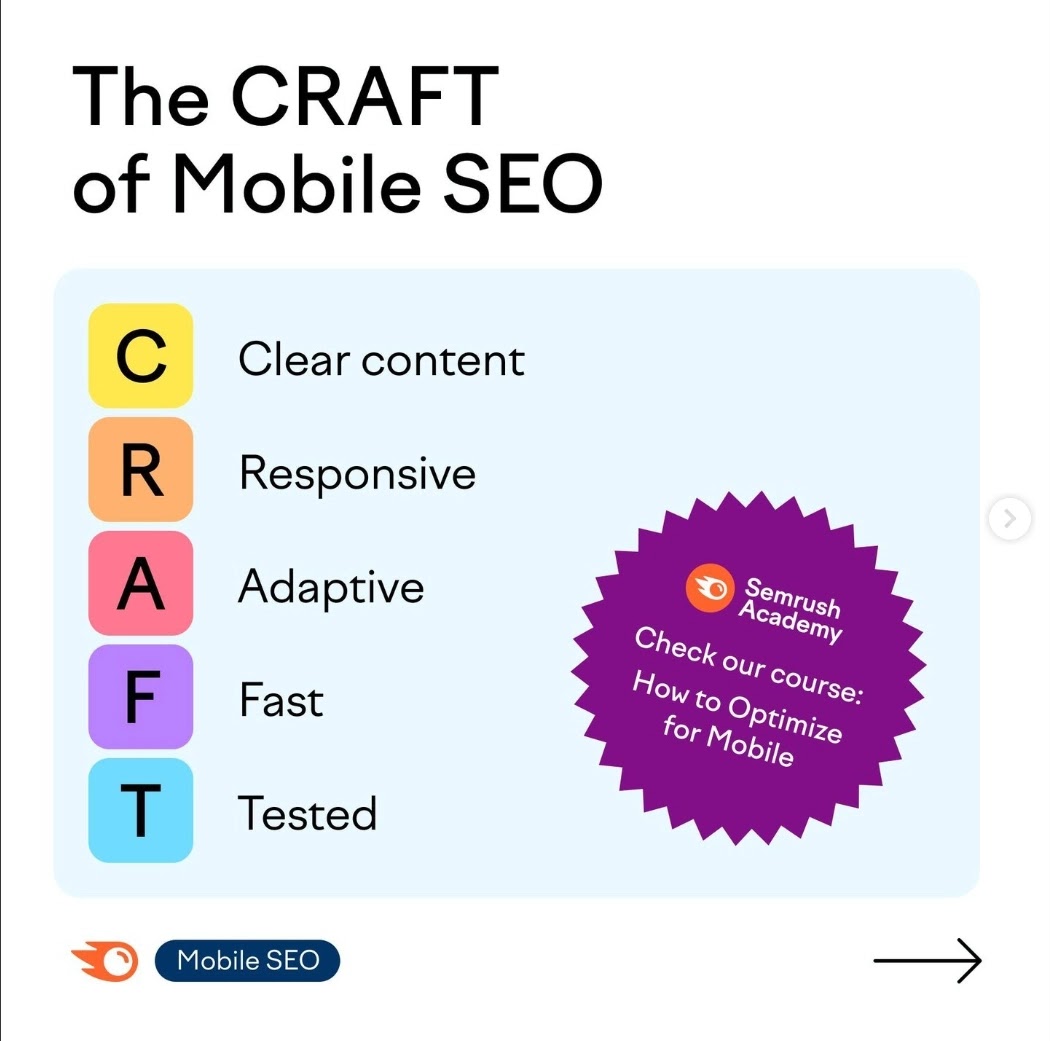
5. Maintain and Optimize
Once you’ve published and distributed your content, you need to consider ongoing upkeep (tidying) and optimization (updating for search rankings).
This keeps content relevant and aligned with your evolving business goals, audience preferences, and constantly changing industry.
Update and Optimize Content
Content optimization means refining and improving your published material to get better visibility and engagement.
It involves boosting the content’s quality with valuable additions or removing irrelevant or outdated content. It can also include adding new keywords, updating titles to be more compelling and attracting backlinks by making it more shareable (e.g., by adding infographics).
For example, say your article “Marketing Best Practices in 2023” has fallen in search rankings. You can update this article to reflect trends in 2024, add any missed keyword opportunities, replace outdated graphics or statistics, and so on.
The goal is to increase the value the reader gets from the content, which in turn makes it more search engine–friendly.
Even if you update a page in your CMS, the old page can still appear in search for weeks or even months. Google’s Content Removal tool (in Google Search Console) can help you request a refresh of outdated content in Google search.
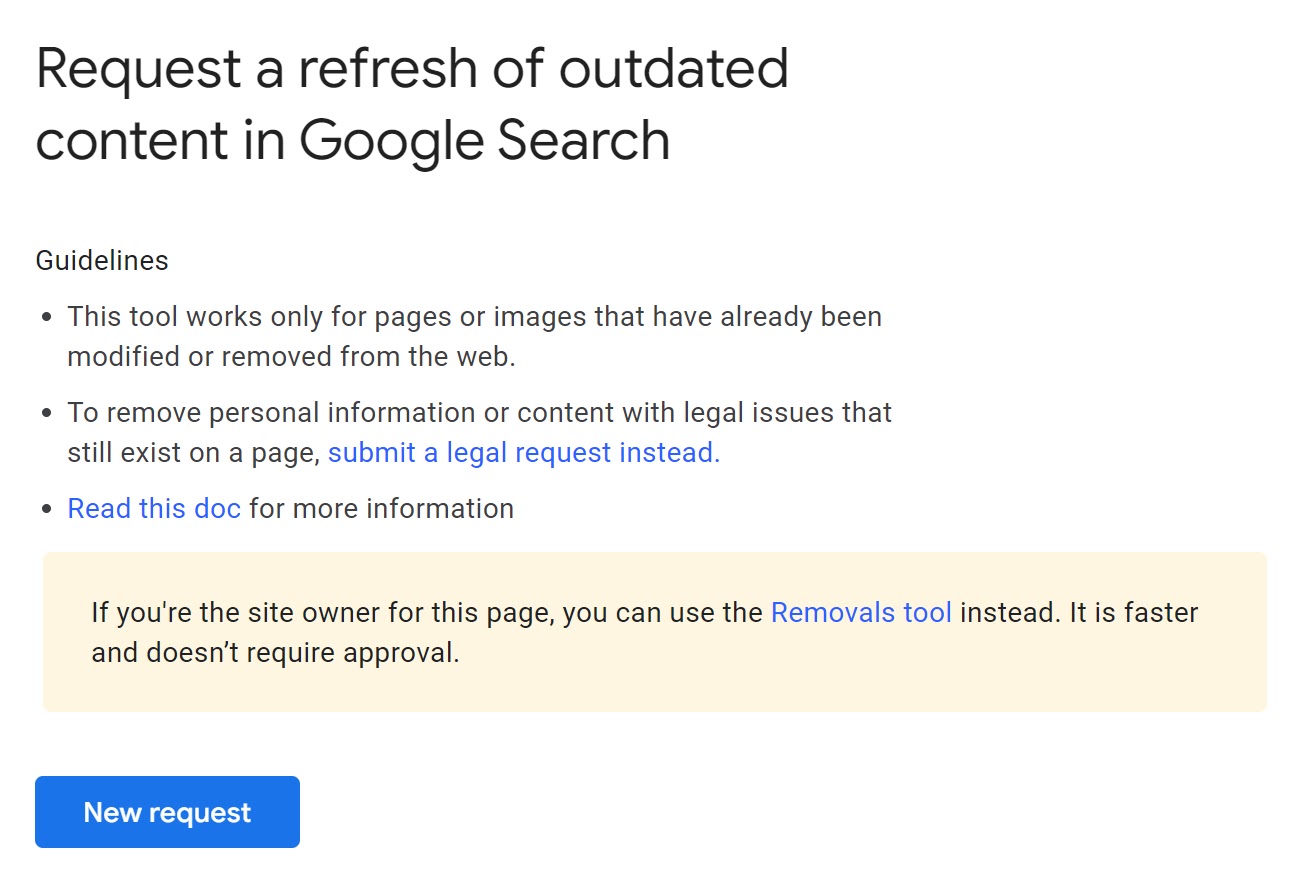
Further reading: How to Use Google’s Tool to Remove Outdated Content
Analyze Performance
Tracking performance provides tangible data on what works and what doesn’t. Use analytics tools to measure how the content performs in terms of engagement, reach, keyword rankings, conversions, and more.
Tools like Google Analytics 4 (GA4) provide insights into website traffic, user behavior, conversion paths, and more. Track metrics like page views, bounce rates, and session duration to understand user engagement with your content.
GA4 can help you understand how visitors interact with your site, from the moment they arrive to the moment they leave (and potentially return).
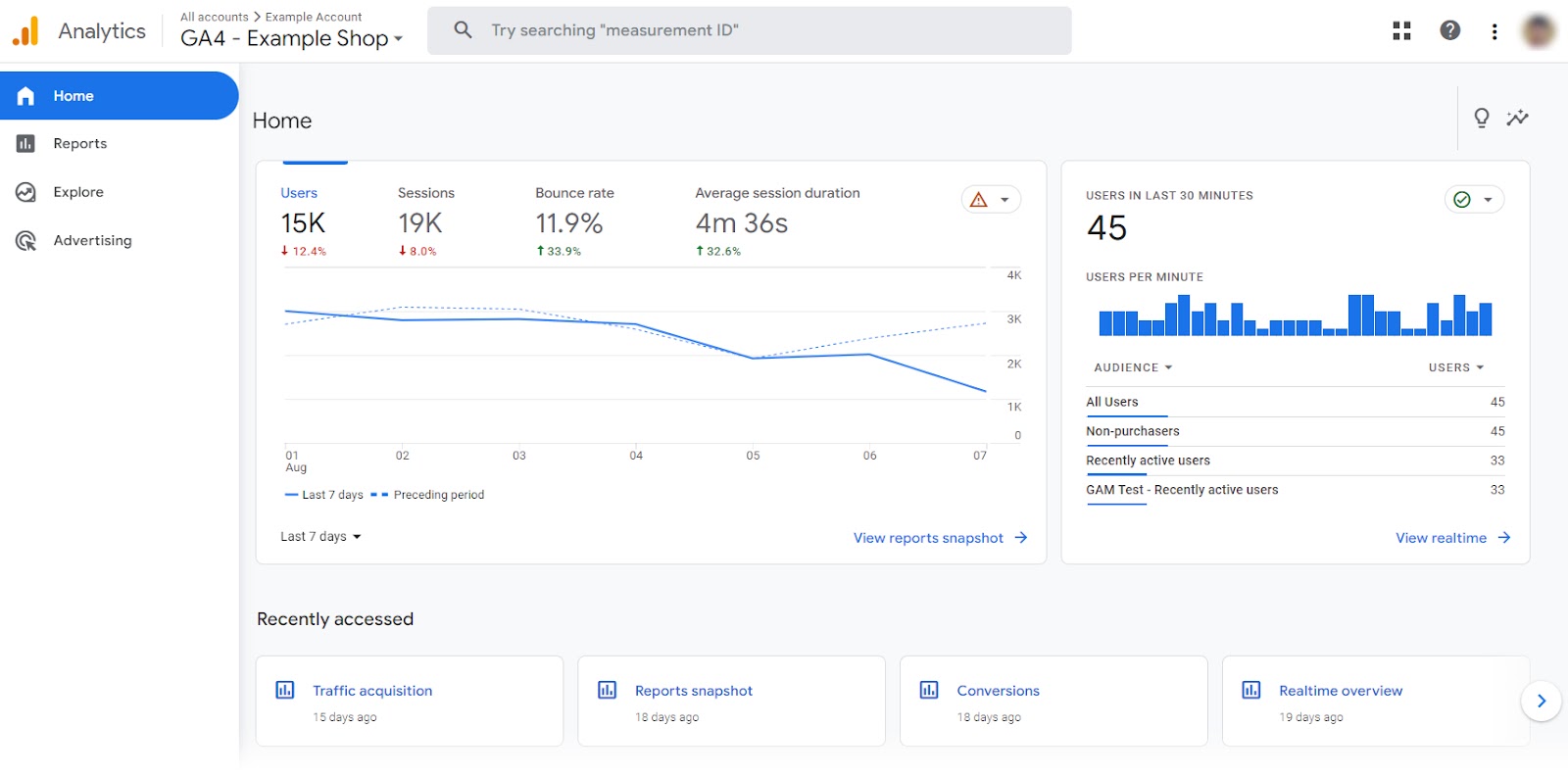
Further reading: Get started now with GA4 (Google Analytics 4) with our guide: Google Analytics for Beginners
To understand how your site performs in Google Search, use the free tool, Google Search Console (GSC).
Unlike GA4, GSC focuses on helping you understand how Google indexes and views your site. It provides insights into your site’s organic search performance.
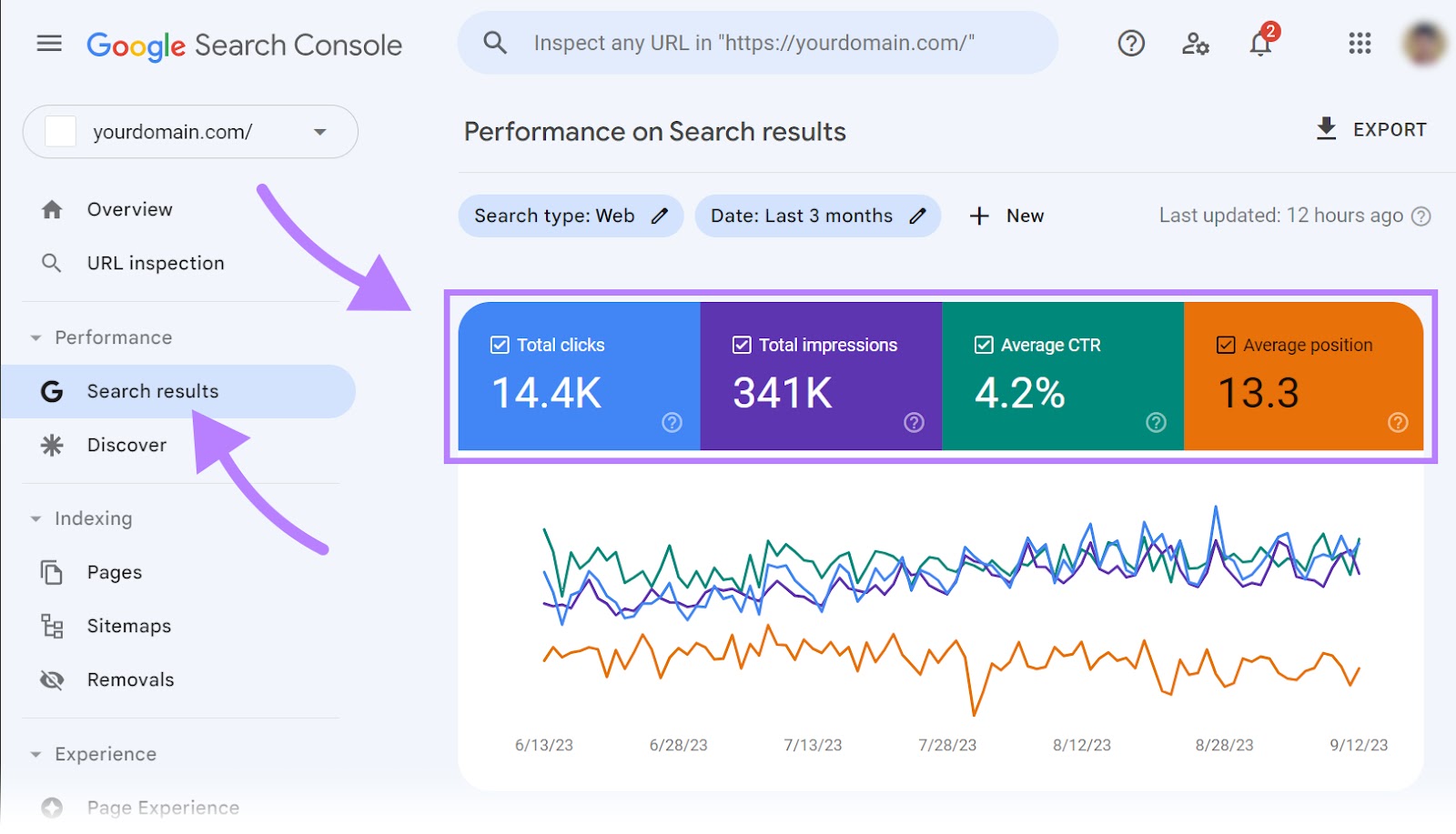
Learn more in our Ultimate Guide to Google Search Console.
If you want more help analyzing your content in depth, Semrush includes tools like:
- Position Tracking: This tool monitors the daily rankings of your website for specific keywords across different search engines
- Site Audit: This tool evaluates and provides a comprehensive analysis of your website’s health in terms of SEO
- Backlick Analytics: This tool provides detailed information about your website’s inbound links, helping you identify potential opportunities or threats
Incorporate Data and Feedback
Use insights gained from analytics to inform future content strategies and make improvements. Engaging with users in the comments section of blogs or social media posts can provide real-time feedback and insights.
For example, after receiving feedback that readers appreciate video demonstrations, you could start adding video to your written reviews.
6. Archive or Delete
Content, over time, can become less relevant, outdated, or even inaccurate. When this happens, either archive or delete it.
Here’s a breakdown of when each action may be more appropriate:
Archive content:
- When it might regain relevance, such as articles on periodic events
- If you work in an industry like healthcare or finance that mandates content retention
- If internal teams can benefit from it, such as in training materials
- When it’s older, but you can still use it for comparative analyses or research
Delete content:
- When it’s outdated with no foreseeable change in relevance
- When it’s redundant with other pages on your site (and redirect, if necessary)
- When storage constraints necessitate removal, especially for large files that can’t be reduced in size
Archiving and deleting content maintains your site’s integrity and relevance.
It also enhances the user experience. Visitors will more easily find pertinent information without having to wade through outdated or unnecessary content.
Types of Digital Content Management (and Examples)
WordPress.org is the most popular CMS on the web, with a 64.2% market share. But many more content management platforms exist.
For nearly every content category, there’s a platform to manage it. And each platform has distinct features and functionality.
Here are some examples:
- Social Media Content Management: Using a tool to manage your social media can help you create and organize it. Some tools have apps that allow you to schedule and publish posts directly from the app to multiple social platforms.
- Web Content Management (WCM): Content creators and web developers can create and manage websites with a web content management system. It provides user-friendly tools and plugins to manage website layout and overall user experience like drag-and-drop modules and content editors.
- Mobile Content Management (MCM): Ensure access to company data on mobile devices like smartphones and tablets is secure with a mobile CMS. It mainly helps with file storage and sharing.
- Open-Source Content Management: Freely accessible, and developed and maintained by community contributions, an open-source CMS offers customization options to cater to unique requirements
- Cloud-Based Content Management: Hosted on remote servers, cloud-based CM platforms allow users to manage and access content through the internet. Scalable, accessible, and great for organizations shying away from in-house CMS management.
- Enterprise Content Management [ECM]: Large businesses and corporations can benefit froman enterprise CMS. It can accommodate many users and a high content volume.
- Headless Content Management: Not everyone needs a dedicated front-end user interface (UI). A headless CMS allows users to manage and publish content via the back end of the CMS.
Create an Effective Content Management System
Every digital asset you create—be it a blog post, video, or even a social media post—reflects your brand. Managing this content makes sure you publish timely, relevant, and up-to-**** information that provides value to your audience and keeps up with industry changes.
Following the content management lifecycle, from planning to updating to archiving, helps you maintain consistency and quality, and make strategic decisions based on performance. This helps you ensure that you get the most from your content so you can continue attracting new customers and nurturing existing ones.
Source link : Semrush.com
